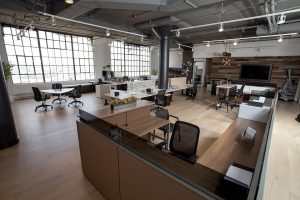
WeWork is in trouble in New York. Its Dock 72 space – spanning 220,000 square feet – seems more like a ghost town than a buzzing networking shared workspace. While it all seemed to be exciting when it opened – and then a few days following that – that has substantially died down ever since.
Most of the private offices at WeWork are vacant with WeWork claiming 30 percent occupancy. According to a recent NYTimes article written by David Trainer:
“If the economy stays strong over the next year, it’s possible WeWork could make progress towards profitability. However, it wouldn’t change the fundamental weakness of the business. The company’s strategy of taking on long-term lease obligations and then subleasing for 1-2 years leaves it vulnerable to an economic downturn and falling real estate prices.”
Attempts are however, being made to save it. SoftBank has agreed to take over control and make some mega investments, on top of the $9bn it already has. It is aiming to decelerate its expansion pace, renovate, focus on its primary markets and more.
But perhaps WeWork is no long “WeWorking.” Perhaps there has been a complete overhaul in attitudes to how we work. That’s what German entrepreneur Lasse Rheingans might have us believe. His idea was recently reported on in a WSJ article, which he is putting in practice in his tech start up firm. He is developing a five-hour workday for employees to arrive at 8am and leave at 1pm at which point they are not expected to do any work until the next morning. BUT, while at the office, the phones must be left in their bags and use of social media is forbidden. Meetings are limited to 15 minutes or less and work emails are only checked twice a day!
WeWork’s mission is to: “create a world where people work to make a life, not just a living,” but perhaps today Rheingans has a more practical way of arriving at this goal.